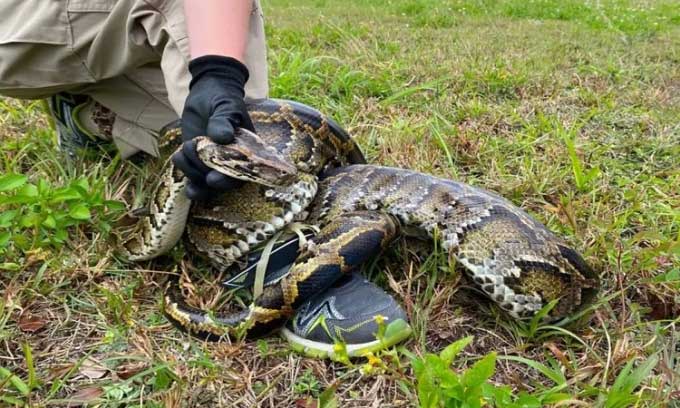Tens of thousands of invasive species are causing losses exceeding $400 billion each year and severely impacting ecosystems worldwide.
Invasive species destroy crops, forests, spread diseases, and disrupt ecosystems at an unprecedented rate globally, and humanity has yet to stem this tide, according to a comprehensive scientific assessment released on September 4 by the Intergovernmental Science-Policy Platform on Biodiversity and Ecosystem Services (IPBES) of the United Nations. This results in damage and loss of income amounting to over $400 billion annually, equivalent to the GDP of Denmark or Thailand, and this could still be an underestimate, according to AFP.

Bangladeshi boatmen navigate through dense mats of water hyacinth on the Buriganga River in 2014. (Photo: AFP).
The assessment lists over 37,000 alien species that have appeared far from their native habitats. This number is trending upward, and on average, the level of damage has quadrupled every decade since 1970.
Economic development, population growth, and climate change will increase the frequency and scale of biological invasions, as well as amplify the impact of invasive alien species, the assessment states. Currently, only 17% of countries have laws or regulations to manage these invasions. The spread of these species is clear evidence that human activities have altered natural systems to the extent of pushing Earth into a new geological epoch, the Anthropocene.
Many invasive species have been intentionally introduced by humans. For example, water hyacinth is believed to have been brought by Belgian officials to Rwanda, East Africa, as an ornamental garden flower. It infiltrated the Kagera River in the 1980s and at one point covered 90% of Lake Victoria. It obstructs navigation, suffocates aquatic life, hampers hydroelectric dam operations, and facilitates mosquito breeding.
The Everglades wetlands in Florida, USA, are struggling with invasive Burmese pythons measuring 5 meters long, white catfish, Lygodium microphyllum, and Brazilian pepper trees. These are “descendants” of pets and ornamental plants brought to the area.
In the 19th century, rabbits were brought to Australia and New Zealand for hunting and food. However, they quickly proliferated, consuming local vegetation, degrading habitats, and threatening the survival of many native species.
However, invasive species often arrive in new lands accidentally, for example, “hitchhiking” on cargo ships. The Mediterranean Sea hosts many non-native species of fish and plants, such as lionfish and Caulerpa sea grass, migrating from the Red Sea through the Suez Canal.

Burmese pythons invaded Florida in the 1980s. (Photo: Miami Herald).
Europe and North America have the highest density of invasive species in the world, according to the new IPBES report. A significant reason for this is that the volume of trade in these regions is enormous.
In Vietnam, in 2019, the Ministry of Natural Resources and Environment issued a Circular outlining the criteria for identifying and publishing a list of 19 invasive alien species and a list of 61 species at risk of invasion.
The 19 invasive alien species are categorized into 6 groups: microorganisms (viruses causing avian influenza…), invertebrates (golden apple snails…), fish (mosquito fish…), amphibians – reptiles (red-eared sliders), birds – mammals (South American beavers), and plants (water hyacinth…). The list of species at risk of invasion includes 61 species from 5 groups: invertebrates (white butterflies, blue crabs…), fish (whole-body white pomfret, tiger fish…), amphibians – reptiles (spotted tree frogs, brown tree snakes…), birds – mammals (ermine weasels, brown squirrels…) and plants (giant mouse-ear water plants, climbing chrysanthemums…).
The IPBES report released on September 4 indicates that invasive species are a major contributing factor to 60% of recorded plant and animal extinctions. Other causes include habitat loss, global warming, and pollution.
These factors also interact with each other. Climate change pushes alien species into warmer waters or lands. Native species in these areas are often vulnerable to invaders they have never encountered. Last month, a deadly wildfire disaster occurred in Lahaina, Maui, Hawaii, partly due to invasive grasses brought decades ago for livestock grazing that have now spread.
An international treaty aimed at protecting biodiversity, signed in Montreal last December, aims to halve the rate of spread of invasive alien species by 2030. The IPBES report provides general strategies to achieve this goal but does not assess the likelihood of success. Essentially, there are three lines of defense: prevention, eradication, and control/restriction if the prior measures fail.


















































